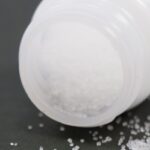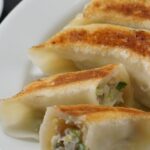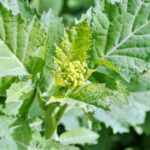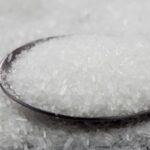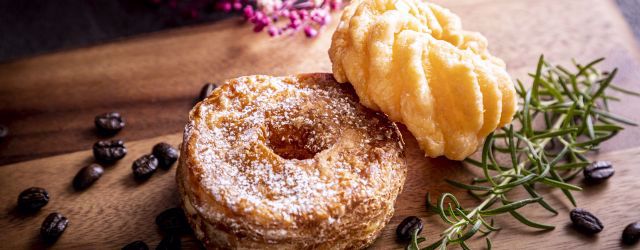
In June, the Consumer Affairs Agency (CAA) has released educational leaflets and posters on “the guideline of additive labeling for use of ‘non-use'”on its website. In addition, “illustrations of 10 type items” are also posted on the website and I would like to focus on these in this column.
The leaflets and posters were published on June 22, 2022. Although this guideline was prepared for consumers, there are examples of specific labeling, which will be also helpful for food manufacturers to understand the guidelines. However, there are two versions of these leaflets and posters, “single-sided” and “double-sided” versions, and there are slight differences in the content of those illustrations. First of all, I would like to sort out what I understand from the three examples described.


1. e.g. Strawberry juice
– If what is not added is not clear, such case may violate the guideline.
– As e.g. 1, when colouring or an ingredient/ additive having a function similar to that of colouring is not used, it can be labeled as “No colouring added”, etc. (However, cranberry extract, etc. fall under the category of ingredients having a function similar to that of colouring.)
– As e.g. 2, it can be labeled such as “The red colour of juice is the colour of strawberry itself.”
2. e.g. Donut
– Labeling that artificial sweetener is not used may violate the guideline.
– As e.g. 1, when sweetener or an ingredient/ additive having a function similar to that of sweetener is not used, it can be labeled as “No sweetener used”, etc. (However, licorice extract, etc. fall under the category of ingredients having a function similar to that of sweetener.)
– As e.g. 2, it can be labeled that “Sweetness extracted from the plant called Rakanka (monk fruit) is used”.
3. e.g. Rice ball
– Labeling of “No preservative added” on foods with antioxidant may violate the guideline.
– As e.g. 1, when preservative or an ingredient/ additive having a function similar to that of preservative is not used, it can be labeled as “No preservative added”, etc. (However, antioxidants or pH regulators. etc. fall under the category of “additives having a function similar to that of preservative.”)
– As e.g.2 it can be labeled that “Antioxidant is used to provide a preservative function”.
In addition, these leaflets and posters do not mention the possibility that both e.g.1 (non-use labeling) and e.g.2 (an ingredient/additive having same function / similar function) may be indicated.
Around November, 2022, there were some revisions of educational leaflets and posters, as follows.
The following parts have been deleted.
- (e.g. 2 of Strawberry juice) “The red colour of juice is the colour of strawberry itself.”
- (e.g. 2 of Doughnut) “Sweetness extracted from the plant called Rakanka (monk fruit) is used”
- (Rice ball) “*antioxidant, pH regulator. etc.”
Next, specific examples are included in “illustrations of 10 type items”, so I would like to excerpt them here.
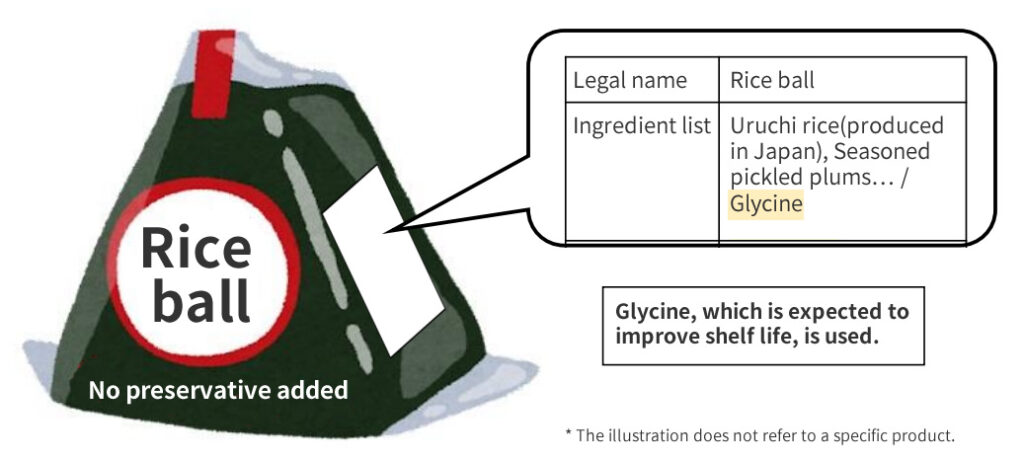
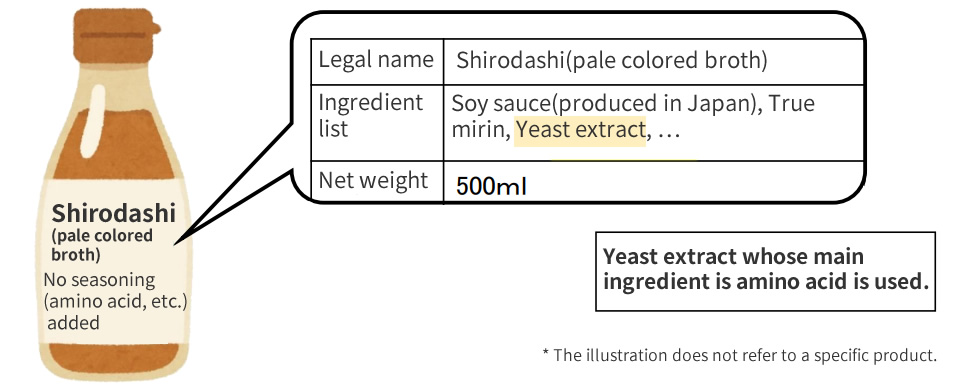
In the case of rice ball labeling, “no preservative added” for foods containing “glycine expected to improve shelf life” falls under Type 4 (Labeling on foods with additives having same function / similar function). The explanation in the guideline includes only “labeling of ‘no preservative added’ on foods with additives to improve shelf life other than preservatives”, which means that glycine, as a specific example, should be noted (falls under an additive with similar functions to preservative).
In addition, in the case of Shirodashi(pale colored broth), it can be seen that labeling “no seasoning (amino acid, etc.) added” for foods that “contain yeast extract whose main ingredient is amino acid” falls under Type 5 (Labeling on foods with ingredients having same function / similar function). The explanation in the guideline includes only “labeling of ‘no seasoning as an additive used’ on foods that use extracts containing amino acids as ingredients “, which means that yeast extract, as a specific example, should be noted (falls under an additive with similar functions to seasoning (amino acids, etc.)).
As shown in these leaflets and posters and the “illustrations of 10 type items”, the key point to keep in mind when trying to label non-use of additives is to “clarify what is not added and what is used”. For future review of labeling of your products, we think it would be good to check it from the following URL.
References
- Educational leaflets and posters “the guideline of additive labeling for use of ‘non-use'”(single-sided)
- Educational leaflets and posters “the guideline of additive labeling for use of ‘non-use'” (double-sided)
- Illustrations of 10 type items in “the guideline of additive labeling for use of ‘non-use'”

Label bank Co., Ltd. CEO (Founder)
Born in Japan. Working on solving various issues related to food labeling operations. Also regularly gives lectures for various organizations in Japan.
Co-author of ‘Latest edition: Guide book Food Labeling Law and related business practical points – from scratch (Japanese version only)’ (DAI-ICHI HOKI CO., LTD/2019).

